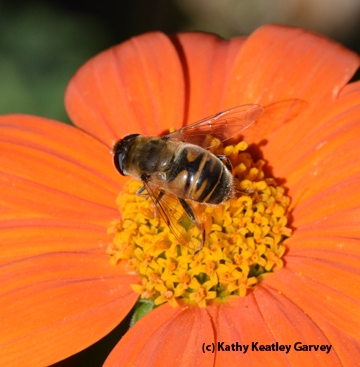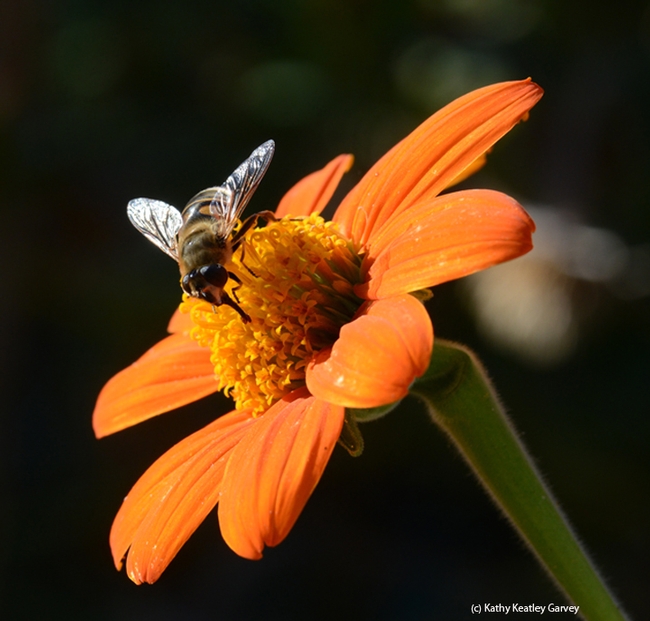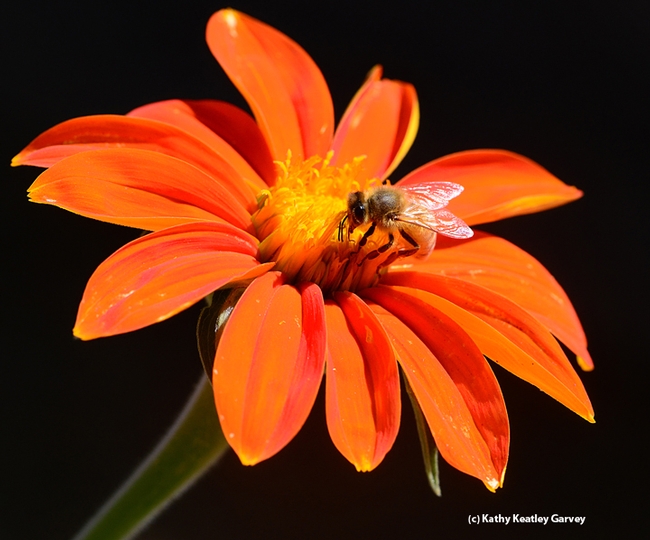
It's often mistaken for a honey bee. Hey, isn't every floral visitor a bee? No, not by a long shot. One's a fly and one's a bee.
That came to mind last weekend when we saw a large number of honey bees (Apis mellifera) and drone flies (Eristalis tenax) nectaring on Mexican sunflowers (Tithonia). The feeding frenzy brought back all the Internet images of mistaken identities. And the arguments.
That's a bee!
No, it's not. It's a fly.
That's no fly. That's a bee.
It's a fly. Bee-lieve me!
To the untrained eye, they look alike at first glance. They're both insects, they're about the same size, and they're both pollinators.
The drone fly, though, in its immature stage is a rat-tailed maggot that lives in drainage ditches, hangs out around manure piles and sewage, and its idea of a pool party is water that is badly polluted.
Honey bees gather nectar and pollen (and water and propolis) for their colonies. Nectar is their carbohydrate and pollen is their protein.
Drone flies mimic bees in color, size and nectaring behavior. They're actually hover flies, members of the family Syrphidae. Watch them hover over flowers like a helicopter.
Lately, we've been seeing an influx of drone flies in our little pollinator garden. Look closely at their large eyes and stubby antennae and you can easily distinguish them from honey bees. Then notice the "H" on their abdomen. Maybe that's "H" for hello? Or "H" for Halloween? Or, or "H" as in "Hey, I'm not a bee! I just mimic a bee so you'll think I'll sting you."
They're bluffing. Drone flies don't sting.
Attached Images:

A drone fly, Eristalis tenax, sips nectar from a Mexican sunflower, Tithonia. (Photo by Kathy Keatley Garvey)

Side view of a drone fly. The fly is often mistaken for a honey bee. (Photo by Kathy Keatley Garvey)

Over and out--this drone fly says it's time to go. (Photo by Kathy Keatley Garvey)

A honey bee sipping nectar from a Tithonia. (Photo by Kathy Keatley Garvey)